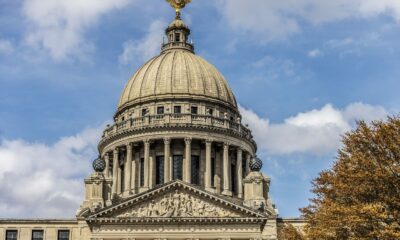Kaiser Health News
A Lot of Thought, Little Action: Proposals About Mental Health Go Unheeded
by Sam Ogozalek, Tampa Bay Times
Wed, 22 Mar 2023 09:00:00 +0000
Thousands of people struggle to access mental health services in Florida. The treatment system is disjointed and complex. Some residents bounce between providers and are prescribed different medications with clinicians unaware of what happened. Jails and prisons have become de facto homes for many who need care.
These problems and more were identified in a scathing report released earlier this year by the Commission on Mental Health and Substance Abuse, a 19-person panel that Florida lawmakers created in 2021 to push for reforms of the state’s patchwork of behavioral health services for uninsured people and low-income families.
What’s most troubling about the group’s findings? They aren’t new.
More than 20 years ago, the Florida Legislature set up a commission with the same name to examine the same issues and publish recommendations on how to improve mental health care in the publicly funded system.
The echoes between the two groups — over two decades apart — are unmistakable. And Florida isn’t the only state struggling with the criminalization of mental illness, a lack of coordination between providers, and insufficient access to treatment.
Last year, the national advocacy group Mental Health America said Florida ranked 46th among the 50 states and the District of Columbia for access to such care. Arizona, Kansas, Georgia, Alabama, and Texas were worse off, according to the nonprofit, which based its rankings on access to insurance, treatment, and special education, along with the cost and quality of insurance and the number of mental health providers.
Conversations about mental health are at the forefront nationwide amid the proliferation of mass shootings, pandemic-related stress, rising suicide rates, and shifting viewpoints on the role of police in handling 911 calls.
“It comes down to how much investment, financially, legislators are willing to put into building a system that works,” said Caren Howard, director of policy and advocacy at Mental Health America, a nonprofit just outside Washington, D.C.
In Florida, the 1999 Commission on Mental Health and Substance Abuse was launched when Jeb Bush was governor. In a 74-page report released in 2001, the group called the state’s treatment system “complex, fragmented, uncoordinated and often ineffective.”
The commission found that jails and prisons were Florida’s “largest mental hospitals” after “deinstitutionalization” began — the 20th-century movement to shutter state psychiatric facilities and treat people instead through community services.
The report also blasted Florida agencies for not sharing patient data with one another and being unable to track whether those with severe mental illnesses like schizophrenia were truly getting needed help.
“A lot of the things that we’re finding now, they found back then,” said Charlotte County Sheriff Bill Prummell, a member of the latest commission who served as the chairperson for about 18 months.
The similarities raise questions for the group about whether its work will also end up on a shelf, collecting dust, as Florida lawmakers continue to wrestle with the same challenges again and again.
“Are they really going to take us seriously?” Prummell asked.
Dropping the Ball
After hosting public meetings across Florida, the 1999 commission urged a slate of reforms, including expanding jail diversion programs like mental health courts.
But the group’s key recommendation was to set up a “coordinating council” in the governor’s office to lead the system and develop a strategy for care.
That never happened.
David Shern, chairperson of the 1999 group and former dean of the University of South Florida’s Louis de la Parte Florida Mental Health Institute, said he thinks Bush’s office dropped the ball.
The Republican governor, known for his spending cuts, didn’t want to add staff to his office, so the coordinating council was never created, said Shern.
That’s “where the plan really fell apart,” he said.
Instead, lawmakers established a work group in the Department of Children and Families to review how Florida could improve its behavioral health system and submit a report to Bush, among other leaders.
The work group disbanded in 2003. That same year, the legislature created a not-for-profit corporation to oversee the system, but it was dissolved in 2011, according to state business records. When the Tampa Bay Times recently asked for the work group’s report, Laura Walthall, a spokesperson for the Department of Children and Families, said it couldn’t be found. Bush didn’t respond to emailed questions.
Former state Rep. Sandra Murman, however, said that what happened is just a reality of bureaucracy.
“It’s the same with all commissions,” said Murman, a Tampa Republican who was part of the 1999 group. “The life cycle of any big report that comes out is probably about five years.”
Lawmakers leave Tallahassee because of term limits. Agency heads step down. New officials get elected. Priorities shift.
“They come in with their agenda, and you won’t see social services ever at the top,” she said of Florida legislative leaders.
But some state lawmakers focused on mental illness in the wake of the 2018 shooting that left 17 students and staff members dead at Marjory Stoneman Douglas High School in Parkland. Amid mounting public demand for more drastic gun control measures, such as an assault weapons ban, the Republican-controlled legislature instead approved more limited restrictions, like Florida’s “red flag” law, along with steps unrelated to gun control, allocating about $400 million for mental health and school safety initiatives.
Before the massacre, Parkland shooter Nikolas Cruz received mental health services through several public and private providers, splitting the future gunman’s medical history, according to a 2019 report from the Marjory Stoneman Douglas High School Public Safety Commission.
“No single health professional or entity had the entire ‘story’ regarding Cruz’s mental health and family issues, due, in part, to an absence of communication between providers and a lack of disclosure by the Cruz family,” the report said.
The vast majority of people with a mental illness are not violent, according to the nonprofit National Council for Mental Wellbeing in Washington, D.C. And they are more likely to be victims of violent crime than perpetrators.
In 2020, a grand jury investigating school safety issues related to the shooting called Florida’s mental health care system “a mess.”
“Deficiencies in funding, leadership and services,” the grand jury said, “tend to turn up everywhere like bad pennies.”
The panel said it didn’t have enough time to conduct a full review of the system and urged state lawmakers to set up a commission to do so.
The latest commission reported that the system remains splintered and suffers from “enormous gaps in treatment.” And there’s still no centralized database on patients.
The group, just like its predecessor over two decades ago, has suggested that Florida create more jail diversion programs and that state agencies share patient data. The commission has pitched new ideas, too, like a pilot program in which one agency manages all public behavioral health funding in a geographic area, including state money and local dollars, so providers can focus more on care and less on complicated billing processes.
“This isn’t going away, and if we don’t address it, it’s going to get worse,” Prummell told a House subcommittee last month.
Solutions to Florida’s problems are not headline grabbers, which makes it tough to generate political support, said Holly Bullard, chief strategy and development officer at the Florida Policy Institute, an Orlando nonprofit.
“Building good government, it can get technical,” she said, “and sometimes it’s hard to communicate the importance of it.”
Will Anything Change?
There’s been some progress in Florida’s mental health care system since 2001, said Jay Reeve, the new chairperson of the latest commission and CEO of Apalachee Center, a behavioral health provider in Tallahassee.
The system is more responsive to regional issues, partly because of state contracts with seven “managing entities” — nonprofits that oversee safety-net services for the uninsured, he said.
There’s also been an increase in initiatives like mobile response teams, which help people in mental health emergencies, and crisis intervention training for police officers, in which they get trained on de-escalation techniques and psychiatric diagnoses so they know when to get residents into treatment instead of arresting them, Reeve said.
The Department of Children and Families used to spend about $500 million a year on community-based behavioral health services such as outpatient treatment, case management, and crisis stabilization units, the 1999 commission reported. Now, its budget for such care is $1.1 billion.
Pockets of innovation exist at the local level, too, as in Palm Beach County, where an initiative called BeWellPBC aims to boost the area’s mental health care workforce, among other things, said Shern, senior associate in the department of mental health at the Johns Hopkins Bloomberg School of Public Health.
But challenges remain.
Nearly 3 million Florida adults have a mental illness, according to Mental Health America. That’s about 17% of the state’s population of those 18 and up. An estimated 225,000 youths experienced at least one major depressive episode in the past year, the nonprofit reported in October.
In 2020, Florida ranked last among states for per capita mental health care funding, the Parkland grand jury said. In 2021, the Miami-Dade County jail system was the largest psychiatric institution in the state, according to the 11th Judicial Circuit.
“As long as you keep things siloed, accountability is easier to dodge,” said Ann Berner, a member of the 2021 commission and CEO of Southeast Florida Behavioral Health Network, a managing entity.
Political will is needed to enact major reforms, Shern said. So is follow-up on the commission’s work, said Murman, who works at Shumaker Advisors Florida, a lobbying firm.
“In this case, it probably is something that has to be revived every five years to really make an impact,” she said.
Rep. Christine Hunschofsky, a Parkland Democrat on the 2021 commission, said there’s bipartisan support to improve the system.
But during the current legislative session, the Tampa Bay Times on March 13 could find only one House bill and a matching Senate bill based on the commission’s 35-page interim report: a proposal to study Medicaid expansion for some young adults age 26 and under. (Republican leaders in Florida have refused to expand the federal-state health care program under the Affordable Care Act, which became law in 2010.)
Hunschofsky said she thinks the legislature will take more action once the commission releases its final report, which is due by Sept. 1.
Republican Gov. Ron DeSantis’ office referred questions to the Department of Children and Families, where officials didn’t answer them.
Senate President Kathleen Passidomo didn’t respond to a voicemail and interview requests made through a spokesperson. Nor could House Speaker Paul Renner be reached for comment.
After more than 20 years, Shern is frustrated.
“It’s time to move on these issues,” he said. “We’ve spent literally decades thinking about them, talking about them.”
This article was produced in partnership with the Tampa Bay Times.
KHN (Kaiser Health News) is a national newsroom that produces in-depth journalism about health issues. Together with Policy Analysis and Polling, KHN is one of the three major operating programs at KFF (Kaiser Family Foundation). KFF is an endowed nonprofit organization providing information on health issues to the nation.
USE OUR CONTENT
This story can be republished for free (details).
By: Sam Ogozalek, Tampa Bay Times
Title: A Lot of Thought, Little Action: Proposals About Mental Health Go Unheeded
Sourced From: khn.org/news/article/florida-mental-health-commission-report-2023-access-to-mental-health-care/
Published Date: Wed, 22 Mar 2023 09:00:00 +0000
Always check our latest articles at…
https://www.biloxinewsevents.com/category/health

Kaiser Health News
US Judge Names Receiver To Take Over California Prisons’ Mental Health Program
SACRAMENTO, Calif. — A judge has initiated a federal court takeover of California’s troubled prison mental health system by naming the former head of the Federal Bureau of Prisons to serve as receiver, giving her four months to craft a plan to provide adequate care for tens of thousands of prisoners with serious mental illness.
Senior U.S. District Judge Kimberly Mueller issued her order March 19, identifying Colette Peters as the nominated receiver. Peters, who was Oregon’s first female corrections director and known as a reformer, ran the scandal-plagued federal prison system for 30 months until President Donald Trump took office in January. During her tenure, she closed a women’s prison in Dublin, east of Oakland, that had become known as the “rape club.”
Michael Bien, who represents prisoners with mental illness in the long-running prison lawsuit, said Peters is a good choice. Bien said Peters’ time in Oregon and Washington, D.C., showed that she “kind of buys into the fact that there are things we can do better in the American system.”
“We took strong objection to many things that happened under her tenure at the BOP, but I do think that this is a different job and she’s capable of doing it,” said Bien, whose firm also represents women who were housed at the shuttered federal women’s prison.
California corrections officials called Peters “highly qualified” in a statement, while Gov. Gavin Newsom’s office did not immediately comment. Mueller gave the parties until March 28 to show cause why Peters should not be appointed.
Peters is not talking to the media at this time, Bien said. The judge said Peters is to be paid $400,000 a year, prorated for the four-month period.
About 34,000 people incarcerated in California prisons have been diagnosed with serious mental illnesses, representing more than a third of California’s prison population, who face harm because of the state’s noncompliance, Mueller said.
Appointing a receiver is a rare step taken when federal judges feel they have exhausted other options. A receiver took control of Alabama’s correctional system in 1976, and they have otherwise been used to govern prisons and jails only about a dozen times, mostly to combat poor conditions caused by overcrowding. Attorneys representing inmates in Arizona have asked a judge to take over prison health care there.
Mueller’s appointment of a receiver comes nearly 20 years after a different federal judge seized control of California’s prison medical system and installed a receiver, currently J. Clark Kelso, with broad powers to hire, fire, and spend the state’s money.
California officials initially said in August that they would not oppose a receivership for the mental health program provided that the receiver was also Kelso, saying then that federal control “has successfully transformed medical care” in California prisons. But Kelso withdrew from consideration in September, as did two subsequent candidates. Kelso said he could not act “zealously and with fidelity as receiver in both cases.”
Both cases have been running for so long that they are now overseen by a second generation of judges. The original federal judges, in a legal battle that reached the U.S. Supreme Court, more than a decade ago forced California to significantly reduce prison crowding in a bid to improve medical and mental health care for incarcerated people.
State officials in court filings defended their improvements over the decades. Prisoners’ attorneys countered that treatment remains poor, as evidenced in part by the system’s record-high suicide rate, topping 31 suicides per 100,000 prisoners, nearly double that in federal prisons.
“More than a quarter of the 30 class-members who died by suicide in 2023 received inadequate care because of understaffing,” prisoners’ attorneys wrote in January, citing the prison system’s own analysis. One prisoner did not receive mental health appointments for seven months “before he hanged himself with a bedsheet.”
They argued that the November passage of a ballot measure increasing criminal penalties for some drug and theft crimes is likely to increase the prison population and worsen staffing shortages.
California officials argued in January that Mueller isn’t legally justified in appointing a receiver because “progress has been slow at times but it has not stalled.”
Mueller has countered that she had no choice but to appoint an outside professional to run the prisons’ mental health program, given officials’ intransigence even after she held top officials in contempt of court and levied fines topping $110 million in June. Those extreme actions, she said, only triggered more delays.
The 9th U.S. Circuit Court of Appeals on March 19 upheld Mueller’s contempt ruling but said she didn’t sufficiently justify calculating the fines by doubling the state’s monthly salary savings from understaffing prisons. It upheld the fines to the extent that they reflect the state’s actual salary savings but sent the case back to Mueller to justify any higher penalty.
Mueller had been set to begin additional civil contempt proceedings against state officials for their failure to meet two other court requirements: adequately staffing the prison system’s psychiatric inpatient program and improving suicide prevention measures. Those could bring additional fines topping tens of millions of dollars.
But she said her initial contempt order has not had the intended effect of compelling compliance. Mueller wrote as far back as July that additional contempt rulings would also be likely to be ineffective as state officials continued to appeal and seek delays, leading “to even more unending litigation, litigation, litigation.”
She went on to foreshadow her latest order naming a receiver in a preliminary order: “There is one step the court has taken great pains to avoid. But at this point,” Mueller wrote, “the court concludes the only way to achieve full compliance in this action is for the court to appoint its own receiver.”
This article was produced by KFF Health News, which publishes California Healthline, an editorially independent service of the California Health Care Foundation.
If you or someone you know may be experiencing a mental health crisis, contact the 988 Suicide & Crisis Lifeline by dialing or texting “988.”
The post US Judge Names Receiver To Take Over California Prisons’ Mental Health Program appeared first on kffhealthnews.org
Kaiser Health News
Amid Plummeting Diversity at Medical Schools, a Warning of DEI Crackdown’s ‘Chilling Effect’
The Trump administration’s crackdown on DEI programs could exacerbate an unexpectedly steep drop in diversity among medical school students, even in states like California, where public universities have been navigating bans on affirmative action for decades. Education and health experts warn that, ultimately, this could harm patient care.
Since taking office, President Donald Trump has issued a handful of executive orders aimed at terminating all diversity, equity, and inclusion, or DEI, initiatives in federally funded programs. And in his March 4 address to Congress, he described the Supreme Court’s 2023 decision banning the consideration of race in college and university admissions as “brave and very powerful.”
Last month, the Education Department’s Office for Civil Rights — which lost about 50% of its staff in mid-March — directed schools, including postsecondary institutions, to end race-based programs or risk losing federal funding. The “Dear Colleague” letter cited the Supreme Court’s decision.
Paulette Granberry Russell, president and CEO of the National Association of Diversity Officers in Higher Education, said that “every utterance of ‘diversity’ is now being viewed as a violation or considered unlawful or illegal.” Her organization filed a lawsuit challenging Trump’s anti-DEI executive orders.
While California and eight other states — Arizona, Florida, Idaho, Michigan, Nebraska, New Hampshire, Oklahoma, and Washington — had already implemented bans of varying degrees on race-based admissions policies well before the Supreme Court decision, schools bolstered diversity in their ranks with equity initiatives such as targeted scholarships, trainings, and recruitment programs.
But the court’s decision and the subsequent state-level backlash — 29 states have since introduced bills to curb diversity initiatives, according to data published by the Chronicle of Higher Education — have tamped down these efforts and led to the recent declines in diversity numbers, education experts said.
After the Supreme Court’s ruling, the numbers of Black and Hispanic medical school enrollees fell by double-digit percentages in the 2024-25 school year compared with the previous year, according to the Association of American Medical Colleges. Black enrollees declined 11.6%, while the number of new students of Hispanic origin fell 10.8%. The decline in enrollment of American Indian or Alaska Native students was even more dramatic, at 22.1%. New Native Hawaiian or other Pacific Islander enrollment declined 4.3%.
“We knew this would happen,” said Norma Poll-Hunter, AAMC’s senior director of workforce diversity. “But it was double digits — much larger than what we anticipated.”
The fear among educators is the numbers will decline even more under the new administration.
At the end of February, the Education Department launched an online portal encouraging people to “report illegal discriminatory practices at institutions of learning,” stating that students should have “learning free of divisive ideologies and indoctrination.” The agency later issued a “Frequently Asked Questions” document about its new policies, clarifying that it was acceptable to observe events like Black History Month but warning schools that they “must consider whether any school programming discourages members of all races from attending.”
“It definitely has a chilling effect,” Poll-Hunter said. “There is a lot of fear that could cause institutions to limit their efforts.”
Numerous requests for comment from medical schools about the impact of the anti-DEI actions went unreturned. University presidents are staying mum on the issue to protect their institutions, according to reporting from The New York Times.
Utibe Essien, a physician and UCLA assistant professor, said he has heard from some students who fear they won’t be considered for admission under the new policies. Essien, who co-authored a study on the effect of affirmative action bans on medical schools, also said students are worried medical schools will not be as supportive toward students of color as in the past.
“Both of these fears have the risk of limiting the options of schools folks apply to and potentially those who consider medicine as an option at all,” Essien said, adding that the “lawsuits around equity policies and just the climate of anti-diversity have brought institutions to this place where they feel uncomfortable.”
In early February, the Pacific Legal Foundation filed a lawsuit against the University of California-San Francisco’s Benioff Children’s Hospital Oakland over an internship program designed to introduce “underrepresented minority high school students to health professions.”
Attorney Andrew Quinio filed the suit, which argues that its plaintiff, a white teenager, was not accepted to the program after disclosing in an interview that she identified as white.
“From a legal standpoint, the issue that comes about from all this is: How do you choose diversity without running afoul of the Constitution?” Quinio said. “For those who want diversity as a goal, it cannot be a goal that is achieved with discrimination.”
UC Health spokesperson Heather Harper declined to comment on the suit on behalf of the hospital system.
Another lawsuit filed in February accuses the University of California of favoring Black and Latino students over Asian American and white applicants in its undergraduate admissions. Specifically, the complaint states that UC officials pushed campuses to use a “holistic” approach to admissions and “move away from objective criteria towards more subjective assessments of the overall appeal of individual candidates.”
The scrutiny of that approach to admissions could threaten diversity at the UC-Davis School of Medicine, which for years has employed a “race-neutral, holistic admissions model” that reportedly tripled enrollment of Black, Latino, and Native American students.
“How do you define diversity? Does it now include the way we consider how someone’s lived experience may be influenced by how they grew up? The type of school, the income of their family? All of those are diversity,” said Granberry Russell, of the National Association of Diversity Officers in Higher Education. “What might they view as an unlawful proxy for diversity equity and inclusion? That’s what we’re confronted with.”
California Attorney General Rob Bonta, a Democrat, recently joined other state attorneys general to issue guidance urging that schools continue their DEI programs despite the federal messaging, saying that legal precedent allows for the activities. California is also among several states suing the administration over its deep cuts to the Education Department.
If the recent decline in diversity among newly enrolled students holds or gets worse, it could have long-term consequences for patient care, academic experts said, pointing toward the vast racial disparities in health outcomes in the U.S., particularly for Black people.
A higher proportion of Black primary care doctors is associated with longer life expectancy and lower mortality rates among Black people, according to a 2023 study published by the JAMA Network.
Physicians of color are also more likely to build their careers in medically underserved communities, studies have shown, which is increasingly important as the AAMC projects a shortage of up to 40,400 primary care doctors by 2036.
“The physician shortage persists, and it’s dire in rural communities,” Poll-Hunter said. “We know that diversity efforts are really about improving access for everyone. More diversity leads to greater access to care — everyone is benefiting from it.”
This article was produced by KFF Health News, which publishes California Healthline, an editorially independent service of the California Health Care Foundation.
The post Amid Plummeting Diversity at Medical Schools, a Warning of DEI Crackdown’s ‘Chilling Effect’ appeared first on kffhealthnews.org
Kaiser Health News
Tribal Health Leaders Say Medicaid Cuts Would Decimate Health Programs
As Congress mulls potentially massive cuts to federal Medicaid funding, health centers that serve Native American communities, such as the Oneida Community Health Center near Green Bay, Wisconsin, are bracing for catastrophe.
That’s because more than 40% of the about 15,000 patients the center serves are enrolled in Medicaid. Cuts to the program would be detrimental to those patients and the facility, said Debra Danforth, the director of the Oneida Comprehensive Health Division and a citizen of the Oneida Nation.
“It would be a tremendous hit,” she said.
The facility provides a range of services to most of the Oneida Nation’s 17,000 people, including ambulatory care, internal medicine, family practice, and obstetrics. The tribe is one of two in Wisconsin that have an “open-door policy,” Danforth said, which means that the facility is open to members of any federally recognized tribe.
But Danforth and many other tribal health officials say Medicaid cuts would cause service reductions at health facilities that serve Native Americans.
Indian Country has a unique relationship to Medicaid, because the program helps tribes cover chronic funding shortfalls from the Indian Health Service, the federal agency responsible for providing health care to Native Americans.
Medicaid has accounted for about two-thirds of third-party revenue for tribal health providers, creating financial stability and helping facilities pay operational costs. More than a million Native Americans enrolled in Medicaid or the closely related Children’s Health Insurance Program also rely on the insurance to pay for care outside of tribal health facilities without going into significant medical debt. Tribal leaders are calling on Congress to exempt tribes from cuts and are preparing to fight to preserve their access.
“Medicaid is one of the ways in which the federal government meets its trust and treaty obligations to provide health care to us,” said Liz Malerba, director of policy and legislative affairs for the United South and Eastern Tribes Sovereignty Protection Fund, a nonprofit policy advocacy organization for 33 tribes spanning from Texas to Maine. Malerba is a citizen of the Mohegan Tribe.
“So we view any disruption or cut to Medicaid as an abrogation of that responsibility,” she said.
Tribes face an arduous task in providing care to a population that experiences severe health disparities, a high incidence of chronic illness, and, at least in western states, a life expectancy of 64 years — the lowest of any demographic group in the U.S. Yet, in recent years, some tribes have expanded access to care for their communities by adding health services and providers, enabled in part by Medicaid reimbursements.
During the last two fiscal years, five urban Indian organizations in Montana saw funding growth of nearly $3 million, said Lisa James, director of development for the Montana Consortium for Urban Indian Health, during a webinar in February organized by the Georgetown University Center for Children and Families and the National Council of Urban Indian Health.
The increased revenue was “instrumental,” James said, allowing clinics in the state to add services that previously had not been available unless referred out for, including behavioral health services. Clinics were also able to expand operating hours and staffing.
Montana’s five urban Indian clinics, in Missoula, Helena, Butte, Great Falls, and Billings, serve 30,000 people, including some who are not Native American or enrolled in a tribe. The clinics provide a wide range of services, including primary care, dental care, disease prevention, health education, and substance use prevention.
James said Medicaid cuts would require Montana’s urban Indian health organizations to cut services and limit their ability to address health disparities.
American Indian and Alaska Native people under age 65 are more likely to be uninsured than white people under 65, but 30% rely on Medicaid compared with 15% of their white counterparts, according to KFF data for 2017 to 2021. More than 40% of American Indian and Alaska Native children are enrolled in Medicaid or CHIP, which provides health insurance to kids whose families are not eligible for Medicaid. KFF is a health information nonprofit that includes KFF Health News.
A Georgetown Center for Children and Families report from January found the share of residents enrolled in Medicaid was higher in counties with a significant Native American presence. The proportion on Medicaid in small-town or rural counties that are mostly within tribal statistical areas, tribal subdivisions, reservations, and other Native-designated lands was 28.7%, compared with 22.7% in other small-town or rural counties. About 50% of children in those Native areas were enrolled in Medicaid.
The federal government has already exempted tribes from some of Trump’s executive orders. In late February, Department of Health and Human Services acting general counsel Sean Keveney clarified that tribal health programs would not be affected by an executive order that diversity, equity, and inclusion government programs be terminated, but that the Indian Health Service is expected to discontinue diversity and inclusion hiring efforts established under an Obama-era rule.
HHS Secretary Robert F. Kennedy Jr. also rescinded the layoffs of more than 900 IHS employees in February just hours after they’d received termination notices. During Kennedy’s Senate confirmation hearings, he said he would appoint a Native American as an assistant HHS secretary. The National Indian Health Board, a Washington, D.C.-based nonprofit that advocates for tribes, in December endorsed elevating the director of the Indian Health Service to assistant secretary of HHS.
Jessica Schubel, a senior health care official in Joe Biden’s White House, said exemptions won’t be enough.
“Just because Native Americans are exempt doesn’t mean that they won’t feel the impact of cuts that are made throughout the rest of the program,” she said.
State leaders are also calling for federal Medicaid spending to be spared because cuts to the program would shift costs onto their budgets. Without sustained federal funding, which can cover more than 70% of costs, state lawmakers face decisions such as whether to change eligibility requirements to slim Medicaid rolls, which could cause some Native Americans to lose their health coverage.
Tribal leaders noted that state governments do not have the same responsibility to them as the federal government, yet they face large variations in how they interact with Medicaid depending on their state programs.
President Donald Trump has made seemingly conflicting statements about Medicaid cuts, saying in an interview on Fox News in February that Medicaid and Medicare wouldn’t be touched. In a social media post the same week, Trump expressed strong support for a House budget resolution that would likely require Medicaid cuts.
The budget proposal, which the House approved in late February, requires lawmakers to cut spending to offset tax breaks. The House Committee on Energy and Commerce, which oversees spending on Medicaid and Medicare, is instructed to slash $880 billion over the next decade. The possibility of cuts to the program that, together with CHIP, provides insurance to 79 million people has drawn opposition from national and state organizations.
The federal government reimburses IHS and tribal health facilities 100% of billed costs for American Indian and Alaska Native patients, shielding state budgets from the costs.
Because Medicaid is already a stopgap fix for Native American health programs, tribal leaders said it won’t be a matter of replacing the money but operating with less.
“When you’re talking about somewhere between 30% to 60% of a facility’s budget is made up by Medicaid dollars, that’s a very difficult hole to try and backfill,” said Winn Davis, congressional relations director for the National Indian Health Board.
Congress isn’t required to consult tribes during the budget process, Davis added. Only after changes are made by the Centers for Medicare & Medicaid Services and state agencies are tribes able to engage with them on implementation.
The amount the federal government spends funding the Native American health system is a much smaller portion of its budget than Medicaid. The IHS projected billing Medicaid about $1.3 billion this fiscal year, which represents less than half of 1% of overall federal spending on Medicaid.
“We are saving more lives,” Malerba said of the additional services Medicaid covers in tribal health care. “It brings us closer to a level of 21st century care that we should all have access to but don’t always.”
This article was published with the support of the Journalism & Women Symposium (JAWS) Health Journalism Fellowship, assisted by grants from The Commonwealth Fund.
KFF Health News is a national newsroom that produces in-depth journalism about health issues and is one of the core operating programs at KFF—an independent source of health policy research, polling, and journalism. Learn more about KFF.
USE OUR CONTENT
This story can be republished for free (details).
The post Tribal Health Leaders Say Medicaid Cuts Would Decimate Health Programs appeared first on kffhealthnews.org
-

 Mississippi Today2 days ago
Mississippi Today2 days agoPharmacy benefit manager reform likely dead
-

 News from the South - Alabama News Feed7 days ago
News from the South - Alabama News Feed7 days agoSevere storms will impact Alabama this weekend. Damaging winds, hail, and a tornado threat are al…
-

 News from the South - Alabama News Feed6 days ago
News from the South - Alabama News Feed6 days agoUniversity of Alabama student detained by ICE moved to Louisiana
-

 News from the South - Oklahoma News Feed5 days ago
News from the South - Oklahoma News Feed5 days agoTornado watch, severe thunderstorm warnings issued for Oklahoma
-

 News from the South - Virginia News Feed6 days ago
News from the South - Virginia News Feed6 days agoYoungkin removes Ellis, appoints Cuccinelli to UVa board | Virginia
-

 News from the South - Kentucky News Feed7 days ago
News from the South - Kentucky News Feed7 days agoA little early morning putting at the PGA Tour Superstore
-

 News from the South - Georgia News Feed5 days ago
News from the South - Georgia News Feed5 days agoGeorgia road project forcing homeowners out | FOX 5 News
-

 News from the South - West Virginia News Feed6 days ago
News from the South - West Virginia News Feed6 days agoHometown Hero | Restaurant owner serves up hope












































